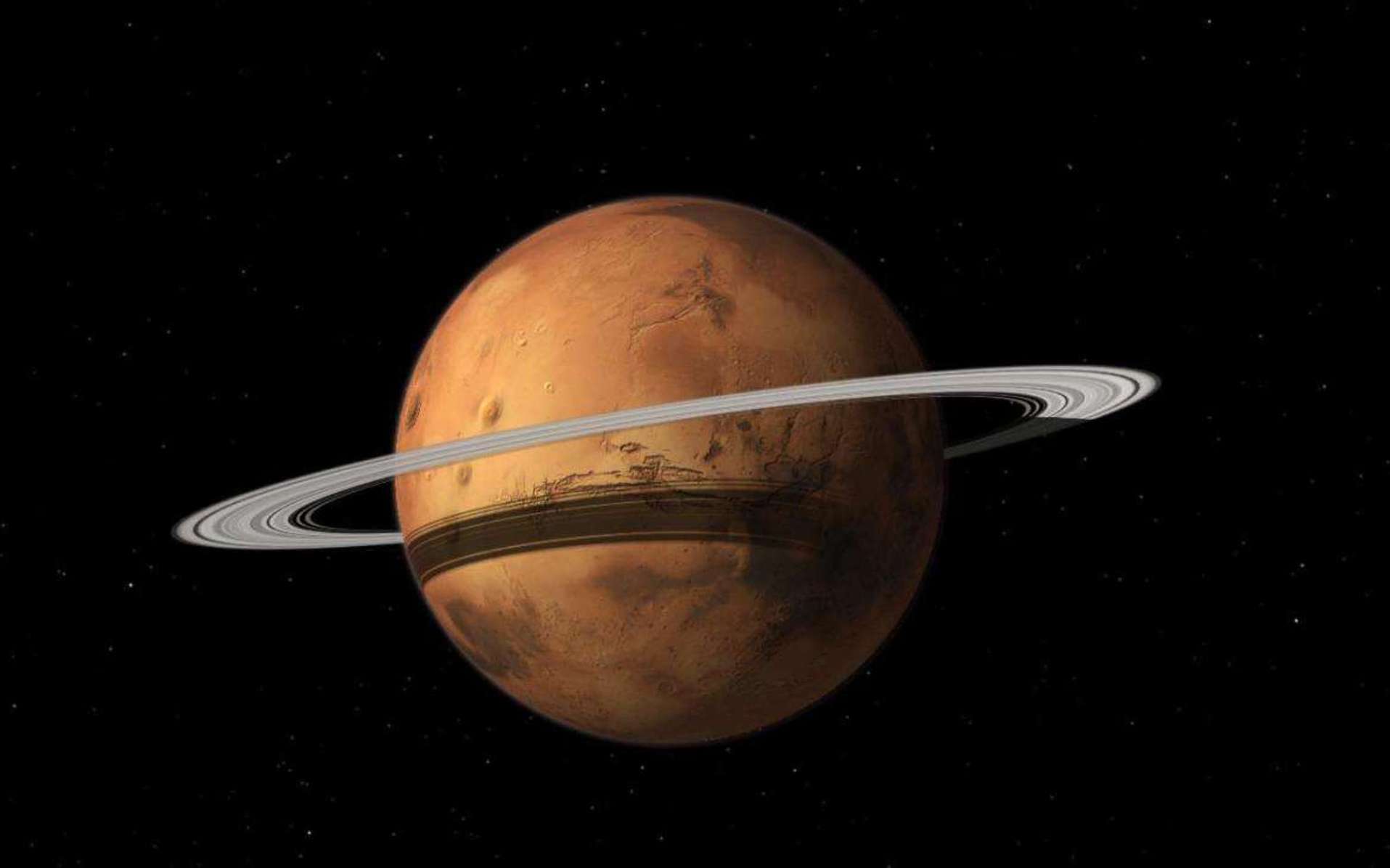A cycle of formation and destruction of moons and rings around Mars has been at work for billions of years. This is what digital simulations suggest and the characteristics of the orbits of Phobos and Deimos, the moons of the Red Planet.
The rings of Saturn were the first planetary rings discovered. That was four centuries ago and it was not until the end of the XX th century for us to do the discovery of the rings of giant planets , especially Neptune by the late André Brahic . The rocky planets , like Mercury or Earth , do not. The Earth stands out, however, by the importance of its satellite, the Moon, to the point that we sometimes speak of them as an example of a binary planet .
Mars also has two moons, but they are much smaller. We hypothesized for a time that they are asteroids captured by the Red Planet. But several of the characteristics of Phobos and Deimos plead for another origin. In 2016, in particular, several teams of researchers, including those of the French planetologist Sébastien Charnoz, from the Institut de physique du globe de Paris (IPGP), had published results of work showing that these two small celestial bodies could be the product the accretion of material ejected from the surface of Mars by an impactorgiant several billion years ago. Several moons have even been formed from the debris disc resulting from this impact and migration processes of these moons have also occurred.
A similar scenario was also studied the following year by American planetologists David Minton and Andrew Hesselbrock. It is the basis for a new article published today in Astrophysical Journal Letters by Minton with Matija Ćuk, researcher at the SETI Institute , which can be freely consulted on arXiv.
In their 2017 article, published in Nature Geoscience , David Minton and Andrew Hesselbrock advanced the existence of a ring cycle around Mars based on numerical simulations . Indeed, currently, Phobos is undergoing tidal forces from Mars which it is approaching. According to the calculations of the two planetologists, in about 70 million years, Phobos will be destroyed by these tidal forces by giving a ring around Mars. However, 80% of the debris produced will end their life on Mars while the remaining 20% will give a new moon by accretion, which moon will then move away from Mars.
A ring-moon cycle at the origin of Phobos and Deimos
This scenario would in fact have been repeated for billions of years from there, too, from a ring of matter initially produced by a giant impact on Mars. Thus, between three and seven ring-satellite cycles over the past 4.3 billion years can explain Phobos and Deimos as they are observed today with, each time, production of several moons around March.
But how do you really test this hypothesis? One could for example imagine identifying, during the next massive geological explorations of Mars by colonists, deposits of important annular materials on its surface, more precisely certain abnormal sedimentary deposits which can be linked to these periodic episodes of ring deposits.
But, while waiting for this day, Matija Ćuk and David Minton explain to us that they found an argument in his favor by studying more carefully the characteristics of another moon of Mars: Deimos. Its orbital plane is inclined by only 2% compared to the equatorial plane of Mars, this may seem insignificant but it is not it when we consider that Deimos, like Phobos, formed in an accretion disc around of Mars, necessarily in its equatorial plane according to the laws of celestial mechanics.
